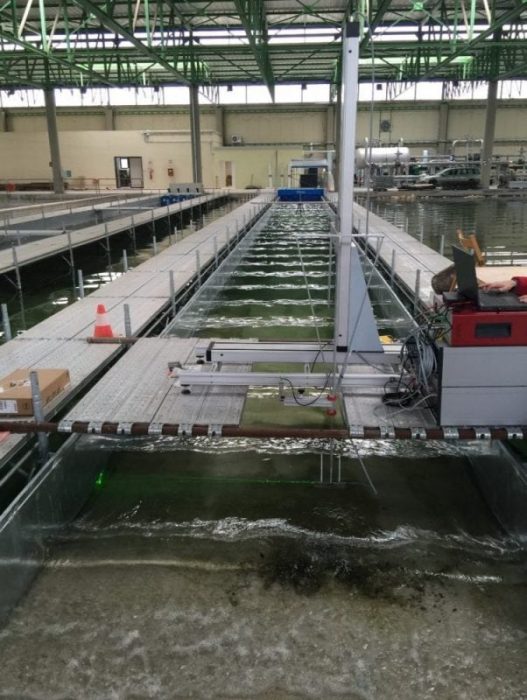
In the past, studies concerning the presence of vegetation in canals have been conducted in order to have information on the velocity diagrams and, therefore, on the flow laws of resistance.
Really, aquatic vegetation provides various services to ecosystems, for example through the production of oxygen it improves the quality of water. Vegetation is also a source of nutrition and promotes biodiversity. Moreover, today studies are carried out on the possibility offered by the vegetation to protect the coasts from erosion.
For these reasons, research centers are increasingly involved in the study of flows in the presence of vegetation, considering also the mutual influence between vegetation and flows.
As regards, turbulent jets, it is well known that the sea is the ultimate sink of waste-water and, generally, in literature, many studies have been devoted to the case of jets issued in still water. Few deals with jets issued in a wave environment or in vegetated cross-flow.
For example, the presence of vegetation alters the velocity field of flows at different scales, favoring or reducing some phenomena. Studies on the effects of vegetation in rivers or seas are conducted at the LIC – Coastal Engineering Laboratory of the Polytechnic University of Bari, Italy (scientific director Prof. Michele Mossa). In particular, studies were conducted on jets issued in a vegetated current, in order to analyze the differences between these jets and the same jets in the absence of vegetation. These studies have highlighted the differences between the velocity fields and the changes in the diffusion and advection processes of potential pollutants carried by the jets.

One of the wave channels (Credit: Michele Mossa)
The study of jets issued in a vegetated crossflow has been analyzed both from a theoretical and experimental point of view. The coefficients for the net dispersion are present in the time-averaged concentration equation. Since it is difficult to calculate experimentally the terms of this equation, we used the analogy with the equation of the turbulent kinetic energy transport, whose turbulent diffusion coefficients can easier be calculated from the length scale associated with turbulent eddies and the turbulent energy. In this way it is possible to evaluate and compare the diffusion process of the jets issued in a crossflow with and without vegetation, obtaining interesting results on the pollution dispersion.
Other studies have been devoted to a specific aspect of vegetated channel flows, in order to have information on the hydrodynamic behavior of the shear layer when the vegetation is present.
Similar studies are conducted in many other research centers internationally, reflecting the importance of the topic.
Future research
Future research will be carried out at the Coastal Engineering Laboratory (LIC) of the Department of Civil, Environmental, Land, Building Engineering and Chemistry (DICATECh) of the Polytechnic University of Bari (Italy). We will analyze the effect of vegetations both in wave and current channels.
For more information please see:
- Mossa, M. and De Serio, F. Rethinking the process of detrainment: jets in obstructed natural flows. Sci. Rep. 6, 39103; doi: 10.1038/srep39103 (2016).
- Mossa, M.; Ben Meftah, M.; De Serio, F.; Nepf, H.M. How vegetation in flows modifies the turbulent mixing and spreading of jets. Sci. Rep. 2017, 7, 6587.
These findings are described in the article entitled Vertical dense jet in flowing current, published in the journal Environmental Fluid Mechanics. This work was led by Michele Mossa from the Polytechnic University of Bari.








